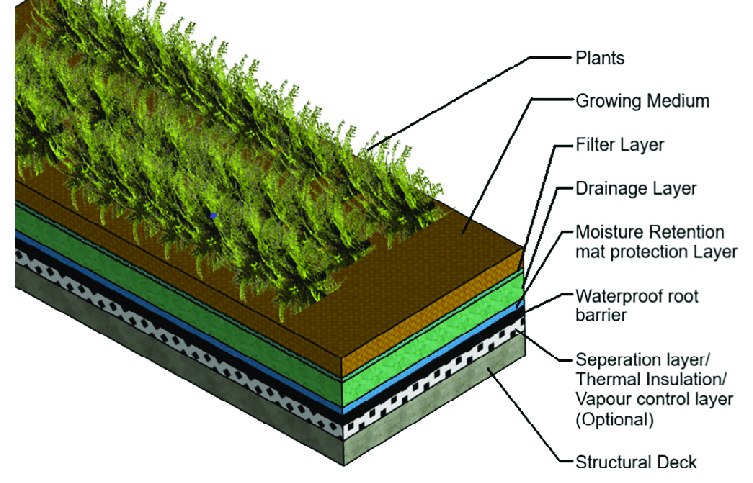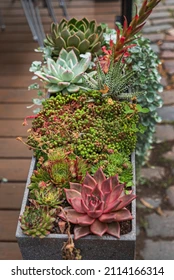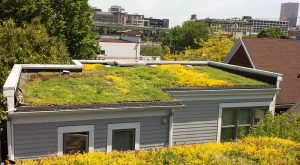With growing concerns about biodiversity loss and climate change, green roofs have gained popularity as an eco-friendly solution. While modern green roofs may seem like a new trend, their roots go back to ancient times. The Vikings in Nordic countries used turf roofs, and today, green roofs are gaining renewed importance for their environmental benefits and aesthetic appeal.
Why Choose a Green Roof?
Green roofs not only enhance the visual appeal of structures but also support biodiversity by attracting birds, butterflies, and bees. They help filter air pollutants, absorb rainwater, and reduce the risk of flooding by slowing down runoff during heavy rains. On a smaller scale, such as a shed or outbuilding, they can create a striking feature and even offer additional space to grow food.
Planning Your Green Roof
Green roofs consist of multiple layers: a waterproof/root barrier, a drainage layer, a water retention mat, a growing medium, and the vegetation itself. When fully saturated, these layers can weigh over 100kg per square meter (20lbs per square foot), which could be too heavy for a typical garden shed. You might need to reinforce your shed’s roof with a frame supported by sturdy posts to handle the extra weight.
If your roof has a pitch greater than 20 degrees, it’s best to divide the roof into smaller sections to prevent the growing medium from slipping off during rain. Roofs with slopes steeper than 30 degrees are generally unsuitable for green roofs.

Choosing the Right Plants
The most straightforward and low-maintenance green roofs use sedums—tough, drought-resistant succulents that thrive in various conditions. These plants are popular for their ability to attract pollinators like bees and butterflies. For a more vibrant roof, you could choose wildflowers, especially low-growing native species or alpine plants.
If you want to grow herbs, thyme, rosemary, and chives are ideal for easy-access roofs. For those interested in an edible green roof, shallow-rooted crops like salad greens and strawberries can be grown, though they work best on roofs that are easy to reach.

Constructing Your Green Roof
A green roof needs a perimeter frame to hold everything in place. This frame can be made of timber, though metal options are available for off-the-shelf installations.
The first layer is the waterproof/root barrier, which protects your roof from water damage and leaks. Butyl pond liner or builder’s plastic are affordable options for small-scale roofs. Ensure that the material is properly sealed to prevent punctures. For larger roofs, you’ll need a drainage layer, typically made from plastic honeycomb-style material, though smaller roofs can skip this step. A filter sheet is also necessary to keep the growing medium in place and prevent clogging of the drainage layer.

Next, add the growing medium. For sedum roofs, the medium should be at least 8cm (3in) deep, while for roofs with wildflowers, herbs, or strawberries, aim for a depth of at least 15cm (6in). A lightweight, peat-free potting mix works well for edibles, while sedums thrive in a poor, low-nutrient medium made from equal parts expanded clay granules and potting mix.
Planting and Maintaining Your Green Roof
Once the base layers are in place, it’s time to plant. Sedum carpets are the easiest option, but you can also purchase trays of plug plants or propagate your own cuttings. It’s best to avoid planting just one species to ensure resilience and biodiversity.
For the first year, water the plants regularly to help them establish, especially during dry spells. Plants near the roof’s peak may dry out faster, so monitor them closely. If bare patches appear, replace the plants as needed.
While setting up a green roof requires a bit of time and effort, the long-term rewards are worth it. Once established, your green roof will become a beautiful, peaceful haven, attracting wildlife and offering a lush, green backdrop to enjoy. Plus, it’s an excellent way to contribute to environmental sustainability.
